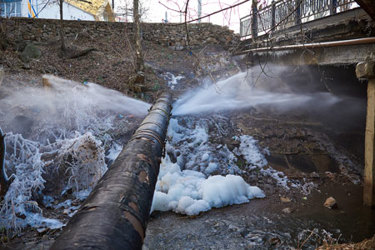Pipeline Management Through Measurement

A growing body of empirical and anecdotal evidence shows that leaks, bursts, turbidity, and other problems in the water distribution system are sometimes caused by specific operational activity. Water hammer, also known as pressure transients, are relatively common but severe pressure fluctuations in pressurized water systems. The severity of pressure transients can be mitigated by changing the way pumps start and stop, as well as when, where, and how valves are opened and closed, among other activities.
Pressure monitoring has long been used to detect hydraulic transients, but many water utilities have struggled to know how to use the data to prevent pipe bursts and similar problems. Intelligent pipeline monitoring is helping close that gap by combining high-resolution pressure data with advanced analytics. This information, overlayed with geographic information system (GIS) or other network data, is helping water utilities educate their operators and customers on how to calm their distribution systems to reduce problems and extend the life of assets.
Get unlimited access to:
Enter your credentials below to log in. Not yet a member of Water Online? Subscribe today.
